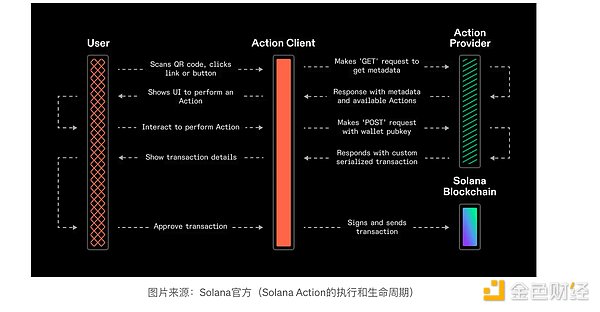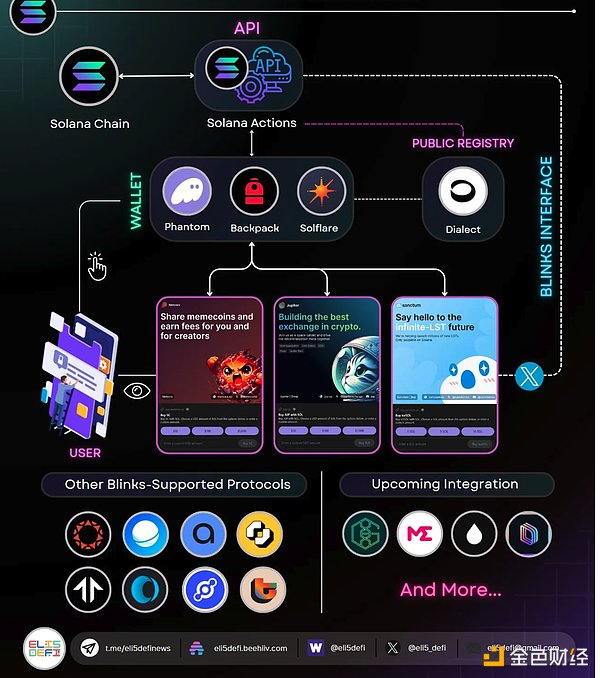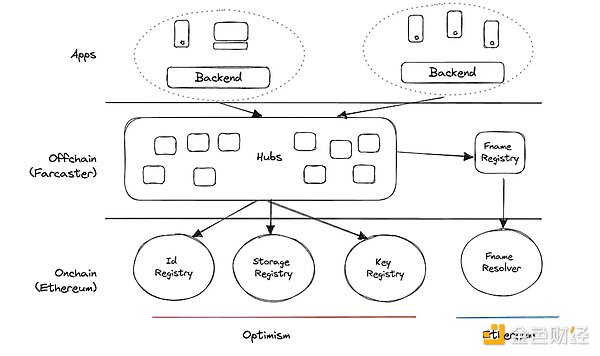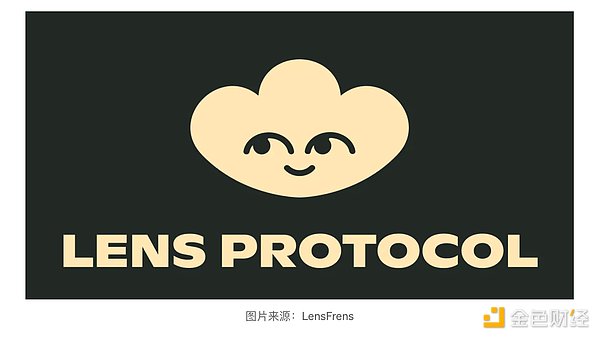Author: Ac-Core, YBB Capital Researcher Source: medium Translation: Shan Ouba, Golden Finance
Abstract
Recently, Solana and Dialect jointly launched Solana's new concept "Actions and Blinks", which enables one-click functions such as exchange, voting, donation, and minting through browser extensions.
Actions facilitates the efficient execution of various operations and transactions, while Blinks ensures network consensus and consistency through time synchronization and sequential records. Together, they enable Solana to provide a high-performance, low-latency blockchain experience.
The development of Blinks requires the support of Web2 applications, which brings up issues such as trust, compatibility, and cooperation between Web2 and Web3.
Compared to Farcaster and Lens Protocol, Actions and Blinks rely more on Web2 applications to obtain traffic, while the latter relies more on on-chain security.
1. How Actions and Blinks work

1.1Actions (Solana Actions)
According to the official definition: Solana Actions is a standardized API that returns transactions on the Solana blockchain. These transactions can be previewed, signed, and sent in a variety of environments, including QR codes, buttons + widgets, and websites on the Internet.
Actions can be simply understood as transactions waiting to be signed. To expand on this, in the Solana network, Actions are an abstract description of the transaction processing mechanism, covering a variety of tasks such as transaction processing, contract execution, and data manipulation. Users can send transactions through Actions, including transfers, purchases of digital assets, etc. Developers call and execute smart contracts through Actions to implement complex on-chain logic.
Solana uses "transactions" to handle these tasks, and each transaction consists of a series of instructions executed between specific accounts. Through parallel processing and the Gulf Stream protocol, Solana forwards transactions to validators in advance, thereby reducing confirmation delays. With a fine-grained locking mechanism, Solana can process a large number of non-conflicting transactions at the same time, significantly improving system throughput.
Solana uses Runtime to execute transactions and smart contract instructions, ensuring the correctness of transaction inputs, outputs, and states during execution. After initial execution, transactions wait for block confirmation. Once a majority of validators agree on a block, the transaction is considered final. Solana can process thousands of transactions per second with confirmation times as low as 400 milliseconds. Thanks to the Pipeline and Gulf Stream mechanisms, the network's throughput and performance are further enhanced.
Actions are not just tasks or operations, they can be transactions, contract executions, or data processing. These actions are similar to transactions or contract calls in other blockchains, but Solana's Actions have unique advantages: 1. Efficient processing: Solana has designed an efficient way to process Actions, enabling fast execution in large-scale networks. 2. Low latency: Solana's high-performance architecture ensures that Actions have very low processing latency, supporting high-frequency transactions and applications. 3. Flexibility: Actions can perform a variety of complex operations, including smart contract calls and data storage/retrieval (see the extended link for more details).
1.2 Blinks (Blockchain Links)
According to the official definition: Blinks can convert any Solana Action into a shareable, metadata-rich link. Blinks enables clients that support Actions (browser extension wallets, robots) to display more features to users. On the website, Blinks can immediately trigger a transaction preview in the wallet without redirecting to a decentralized application; in Discord, robots can expand Blinks into a set of interactive buttons. This enables any web interface that displays a URL to achieve on-chain interaction.
In short, Solana Blinks converts Solana Actions into shareable links (similar to HTTP). By enabling related features in supporting wallets such as Phantom, Backpack, and Solflare, websites and social media can become places for on-chain transactions, and any website with a URL can directly initiate Solana transactions.
In summary, although Solana Actions and Blinks are permissionless protocols/standards, compared to intent narrative solvers, they still require client applications and wallets to ultimately help users sign transactions.
The direct goal of Actions & Blinks is to "HTTPize" Solana's on-chain operations and parse them into Web2 applications similar to Twitter.

2. Decentralized social protocol on Ethereum
2.1 Farcaster protocol
Farcaster is a decentralized social graph protocol based on Ethereum and Optimism, which supports applications to interconnect through decentralized technologies such as blockchain, P2P networks and distributed ledgers. This allows users to seamlessly migrate and share content on different platforms without relying on a single centralized entity. Its Open Graph Protocol (which automatically extracts content from links posted in social network posts and injects interactive features) allows for the automatic extraction of user-shared content and its conversion into interactive applications.
Decentralized network: Farcaster relies on a decentralized network to avoid the single point of failure common in centralized servers in traditional social networks. It uses distributed ledger technology to ensure the security and transparency of data.
Public key cryptography: Each user on Farcaster has a pair of public and private keys. The public key is used to identify the user, while the private key is used to sign the user's actions. This approach ensures the privacy and security of user data.
Data portability: User data is stored in a decentralized storage system rather than on a single server. This gives users full control over their data and allows it to migrate between different applications.
Verifiable identity: Through public key cryptography, Farcaster ensures that the identity of each user is verifiable. Users can prove their control over their account through signing behavior.
Decentralized Identifier (DID): Farcaster uses decentralized identifiers (DID) to identify users and content. DID is based on public key cryptography and is highly secure and immutable.
Data consistency: In order to ensure the consistency of data across the entire network, Farcaster adopts a consensus mechanism similar to blockchain (with "posts" as nodes), which ensures that all nodes reach consensus on user data and operations, maintaining data integrity and consistency.
Decentralized Applications: Farcaster provides a development platform that allows developers to build and deploy decentralized applications (DApps). These applications can be seamlessly integrated with the Farcaster network to provide users with a variety of functions and services.
Security and Privacy: Farcaster emphasizes the privacy and security of user data. All data transmission and storage are encrypted, and users can choose to make their content public or confidential.
In Farcaster's new Frames feature (different Frames can be integrated with Farcaster and run independently), users can turn "posts" (similar to posts, including text, pictures, videos and links) into interactive applications. These contents are stored in a decentralized network, ensuring their permanence and immutability. Each post has a unique identifier when it is published, making it traceable, and the user's identity is verified through a decentralized authentication system. As a decentralized social protocol, Farcaster's client can be seamlessly integrated with Frames.
2.2 Main Principles

The Farcaster protocol is mainly divided into three layers: identity layer, data layer (hub) and application layer. Each layer has specific functions and roles.
Identity layer
· Function: Responsible for managing and verifying user identities; providing decentralized identity authentication to ensure the uniqueness and security of user identities. It consists of four registries: ID Registry, Fname, Key Registry, Storage Registry (see reference link 1 for details).
· Technical principle: It uses a decentralized identity identifier (DID) based on public key encryption technology. Each user has a unique DID to identify and verify his or her identity. The use of public and private key pairs ensures that only users can control and manage their own identity information. The identity layer ensures seamless migration and authentication across different applications and services.
Data Layer - Hub
· Function: Responsible for storing and managing user-generated data, providing a decentralized data storage system that ensures data security, integrity and accessibility.
· Technical principle: Hub is a decentralized data storage node distributed in the network. Each Hub, as an independent storage unit, is responsible for storing and managing a portion of the data. Data is distributed in the Hub and protected using encryption technology. The data layer ensures high availability and scalability of data, allowing users to access and migrate their data at any time.
Application layer
· Function: Provides a platform for developing and deploying decentralized applications (DApps), supporting various application scenarios such as social networking, content publishing, and messaging.
· Technical principle: Developers can use the APIs and tools provided by Farcaster to build and deploy decentralized applications. The application layer is seamlessly integrated with the identity layer and the data layer to ensure identity authentication and data management during the use of the application. Decentralized applications run on decentralized networks and do not rely on centralized servers, thereby enhancing the reliability and security of the application.
2.3 Summary of the above content
Solana's Actions & Blinks are designed to open up traffic channels for Web2 applications. Direct impact: User perspective: Simplifies transactions while increasing the risk of funds being stolen. Solana perspective: Greatly enhances cross-border traffic effects, but faces compatibility and support challenges under Web2's censorship regulations. Future developments under Solana's vast ecosystem, such as Layer2, SVM, and mobile operating systems, may further enhance these capabilities.
On the other hand, Ethereum's Farcaster protocol weakens the integration of Web2 traffic compared to Solana's strategy, enhancing overall anti-censorship capabilities and security. The Farcaster+EVM model is closer to the native concept of Web3.
2.4 Lens Protocol

Lens Protocol is another decentralized social graph protocol that aims to give users full control over their social data and content. Through Lens Protocol, users can create, own and manage their own social graphs, which can be seamlessly migrated between different applications and platforms. The protocol uses NFTs to represent users' social graphs and content, ensuring the uniqueness and security of the data. Lens Protocol is positioned on Ethereum and has some similarities and differences with Farcaster:
Similarities:
User control: In both protocols, users have full control over their data and content.
Authentication: Both use decentralized identifiers (DID) and encryption technology to ensure the security and uniqueness of user identities.
Differences:
Technical Architecture:
Farcaster: Built on Ethereum (L1), it is divided into the identity layer (for managing user identities), the data layer (a hub for decentralized storage nodes), and the application layer (for providing a DApps development platform), using offline hubs for data dissemination.
Lens Protocol: Based on Polygon (L2), it uses NFT to represent users' social graphs and content. All activities are stored in the user's wallet, emphasizing data ownership and portability.
Verification and Data Management:
Farcaster: Uses distributed storage nodes (Hubs) to manage data, ensuring security and high availability, and performs annual processing updates and consensus through incremental graphs.
Lens Protocol: Personal data profile NFT ensures the uniqueness and security of data without the need for updates.
Application Ecosystem:
Farcaster: Provides a comprehensive DApps development platform that is seamlessly integrated with its identity and data layer.
Lens Protocol: Focuses on the portability of user social graphs and content, supporting seamless switching between different platforms and applications.
Through comparison, we can see that Farcaster and Lens Protocol have similarities in user control and authentication, but significant differences in data storage and ecosystem. Farcaster emphasizes layered structure and decentralized storage, while Lens Protocol emphasizes the use of NFT to achieve data portability and ownership.
3. Which of the three can be the first to achieve large-scale application?
Through the above analysis, the three protocols have their own advantages and challenges. Solana has quickly gained attention with its high performance and ability to turn any website or application into a cryptocurrency transaction gateway, taking advantage of social media platforms and Blinks to easily generate links. However, its reliance on Web2 brings a trade-off between traffic and security.
Lens Protocol was founded in 2022 and took advantage of its modular design and on-chain storage to provide good scalability and transparency, seizing early market opportunities, but may face challenges in cost and scalability as well as market FOMO sentiment.
Farcaster's advantage is that its design is closest to Web3 principles and has the highest degree of decentralization, but this also brings challenges in technology iteration and user management.
 JinseFinance
JinseFinance




